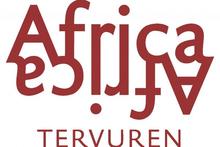This workshop was organised within the framework of the Belgian Network for DNA barcoding (BeBoL) and was financially supported by a FWO research network grant and SYNTHESIS. It focussed on three crucial aspects of the analysis of DNA data from degraded biological material (e.g. old, ancient, museum or badly preserved specimens):
- DNA extraction methods for degraded material,
- library preparation and next-generation sequencing of fragmented DNA and
- quality control and interpretation of the results (through illustrated examples).
Date: 02-03 June 2016
Venue: Royal Belgian Institute of Natural Sciences, Vautierstraat 29, 1000 Brussels, Belgium.
Number of participants: 66 from more than 25 research units

Program and pdf files of the oral presentations:
Thursday 2 June 2016: lectures in the large auditorium (chair: Claudio Ottoni)
09:30 Registration and coffee
11:00 Hernán Burbano (Research Group for Ancient Genomics and Evolution, Max Planck Institute for Developmental Biology, Tuebingen, Germany).
• Ancient DNA: biochemical characteristics and authenticity
• Temporal patterns of DNA and decay kinetics of DNA retrieved from herbarium specimens
• Extraction of ultra-short DNA molecules
• Colonization of new ecological niches by introduced species: Arabidopsis thaliana in North America
12:00 Lunch
15:30 Coffee
16:00 Alfried P. Vogler (Faculty of Natural Sciences, Department of Life Sciences - Silwood Park, Imperial College, London, UK).
• DNA extraction: museum insects.
• NGS technique: metabarcoding of complex samples and whole mt genome sequencing.
• Example: beetle mtDNA phylogenomics.
17:00 End of the lectures
Friday 3 June 2016: practical demonstration in the wet lab
09:30 Katerina Guschanski & Tom van der Valk (Evolutionary Biology Centre (EBC), Dept of Ecology and Genetics/Animal Ecology, Uppsala University, Uppsala, Sweden).
N.B. Number of participants restricted to 20 (ca. 1 per research unit). Please note that participants will look at the experiments performed by the instructors. They will not handle any samples or reagents.
• DNA extraction of ancient DNA from teeth following the protocol of Dabney et al. (2013) and library preparation for NGS with a double-barcoding double-indexing strategy.
09:30 - 11:00
Extract samples that have been incubating during the night
11:00 - 12:00
Blunt-Ending ~30 minutes + 15 minutes incubation + minElute cleanup (~10 minutes)
12:00 - 12:30
Adapter ligation ~30 minutes
12:30 - 13:30
1 Hour Adapter ligation incubation* + LUNCH
*incubation should be minimal 30 minutes but can be longer, we should aim for not longer than 1 hour
13:30 - 13:45
minElute cleanup (~10 minutes)
13:45 - 14:15
Adapter fill-in ~30 minutes
14:15 - 15:00
40 minutes Adapter fill-in incubation + Collecting sample powder (cementum + dentin)
15:00 - 16:15
Indexing ~30 minutes + 30 minutes PCR + minElute cleanup (~10 minutes)
16:15 - 17:45
Bioanalyzer ~30 minutes + 1 hour run time*
In case we did not finish the drilling during the 40 minutes Adapter fill-in incubation we could finish it during the Bioanalyzer run.



![]()